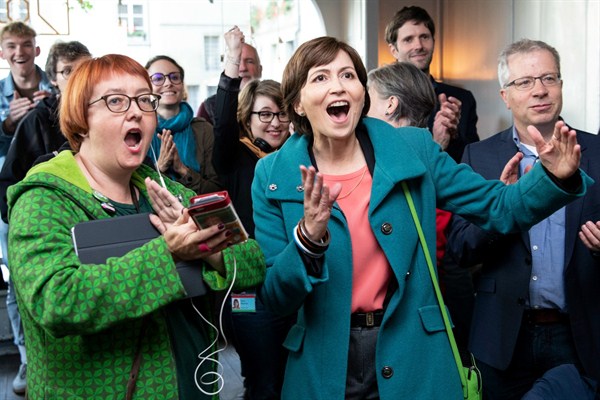Switzerland’s Green party outdid already high expectations in the country’s late-October elections, picking up a record number of seats to become the fourth-largest party in the National Council, the lower house of the Swiss parliament. The right-wing, anti-immigrant Swiss People’s Party finished first, but well below its 2015 results, followed by the center-left Social Democrats and the center-right Liberals, both of which also suffered losses compared to 2015. Combined with gains by the Green Liberals, a more centrist environmental party, the elections represented a Green “tsunami,” according Pascal Sciarini, as quoted in The New York Times.
In an email interview, Sciarini, who is a professor of political science at the University of Geneva, explains what drove the Greens’ strong finish and why the Swiss People’s Party wasn’t able to dominate the narrative of these elections as it did in 2015. He also discusses the obstacles the Greens face in their efforts to be represented in the Federal Council, Switzerland’s seven-member executive Cabinet.
World Politics Review: What explains the surge in popularity of the Greens and the Green Liberals in the elections? Are there signs that this represents a durable shift in the preferences of the Swiss electorate?

